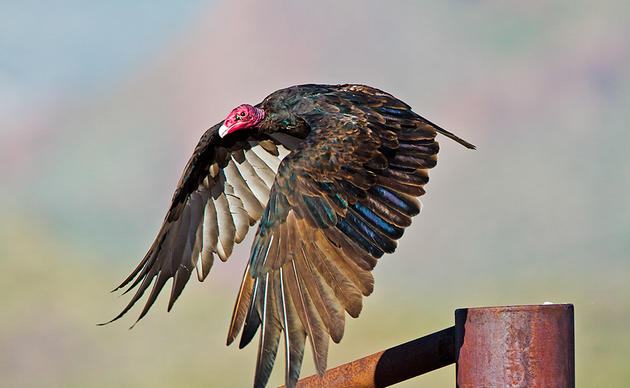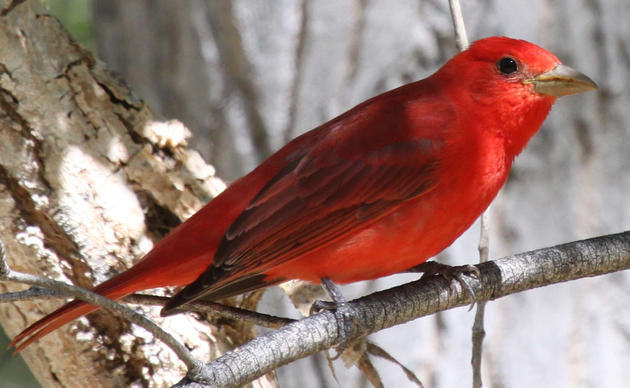Salt Cedar Removal
Staff and volunteers of the Kern River Preserve have spent over two decades fighting invasive species. These efforts have paid off with one of the most native forests in western North America. Audubon and partners spend time each year eradicating invasive weeds from the South Fork Watershed.
Each of us can help prevent the spread of invasive plants and animals. You can help by learning which species can become invasive and eradicate these from your own yards. Help to educate your local nurseries about the problem with invasives and get them to stop selling problem plants. Contact your legislator and local agriculture commissioner to make sure no invasives are sold or promoted in your county or town.
The article that follows is a tutorial on salt cedar: one of a series of articles staff of the Kern River Preserve are preparing to educate about local invasives and some steps each of us can take to help eradicate them.
SALT CEDAR
Four invasive Tamarix species have been identified in California: T. ramosissima, T. chinensis, T. gallica, and T. parviflora. All four are many-branched shrubs or trees less than twenty-six feet tall with small scale-like leaves, from which comes the name salt cedar. Leaves have salt glands, and salt crystals can often be seen on leaves. Small white to deep pink flowers are densely arranged on racemes. The bark is reddish brown with smooth stems less than an inch in diameter. The large Athel Tree (Tamarix aphylla) is also a salt cedar but it is not an invasive like its cousins the shrubbier types.
Identification
* Shrub or small tree, 5 to 20 feet tall.
* Pale green leaves are small and scale-like, on thin stems with many branches.
* Flowers pink to white in color, appearing from spring to late summer.
Identification key in: Hickman, J. ed. 1993. The Jepson Manual: Higher Plants of California. University of California Press.
Habitat and local distribution
* Well-adapted to alkaline soils, wind, and a wide range of temperatures; typically found along waterways.
Impacts
* Excludes other plants from growing underneath, due to salt deposited from leaves.
* Aggressive root system depletes ground water needed by native species.
Prevention and Control
* Plant natives or spread native seed in disturbed areas.
* Search threatened areas regularly (at least annually) to look for newly arrived plants.
General control notes
* Difficult to eradicate since species spreads rapidly and usually resprouts after treatment. Follow-up monitoring to treat resprouts essential (Lovich 2000).
Manual or mechanical control
* Root plowing and cutting—useful for initial removal of heavy infestations; follow-up application of herbicides by a licensed pesticide applicator is suggested to treat resprouting.
* Estimated costs: vary depending on if volunteers conduct removal and on the plant density; equipment costs range may from $100 to over $1,000. There may be additional fees for disposal of plant material.
* Pulling by hand—uprooting of seedlings and small plants.
* Prescribed burning is useful to reduce biomass prior to other treatments. (check your local air control district and fire department for restrictions).
* Flooding can be effective when thickets are flooded for one to two years.
Biological control
* Biological control agents—USDA currently testing several insect species from other countries for release in United States.
* Grazing—cattle grazing can reduce amounts of sprout regrowth.
Chemical control
Contact a licensed pesticide applicator if you would like to control any weeds chemically.
MANAGEMENT IN HOME LANDSCAPES
Prevention is the best management strategy for avoiding problems with salt cedar in and around home landscapes. If salt cedar is found growing in landscaped areas, immediately pull the plant before it can spread. Pulling plants (try to remove as much of the root as possible) is an effective way of controlling a few scattered plants growing within landscaped areas.
MANAGEMENT IN PASTURES, RANGELAND, RIGHTS-OF-WAY, AND CROPS
Established salt cedar populations are difficult to control and require multiple years of intensive management. Removing all woody material is essential as the plant can resprout from twigs. A management program should include prevention, monitoring, and treatment of small satellite populations before plants develop extensive roots. Make sure root fragments and seed are not transported to other sites. Always clean vehicles, machinery, and clothing after visiting infested areas.
References and more information
Carpenter, A.T. 1999. Element Stewardship Abstract for Tamarix ramosissima Ledebour , Tamarix pentndra Pallas, Tamarix chinensis Loureiro, Tamarix parviflora De Candolle, salt cedar, tamarisk. The Nature Conservancy, Wildland Invasive Species Team. Arlington, VA. Available athttp://tncweeds.ucdavis.edu/esadocs/documnts/tamaram.pdf .
DeLoach, C.J. 1997. Biological control of weeds in the United States and Canada . In: Luken, J.O and J.W. Thieret (eds.). Assessment and Management of Plant Invasions. Springer-Verlag , New York , NY.
Gary, H.L. 1960. Utilization of five-stamen tamarisk by cattle. Rocky Mountain Forest and Range Experiment Station. Research Notes. 51:1-3.
Gibbons, M.V., M.G. Rosenkranz, H.L. Gibbons, Jr., and M.D. Sytsma. 1999. Guide for Developing Integrated Aquatic Vegetation Management in Oregon. Center for Lakes and Reservoirs, Portland State University, Portland, OR.
Lovich, J. 2000. Tamarix spp. In Invasive Plants of California Wildlands. Carla C. Bossard, John M. Randall, Marc C. Hoshovsky, Editors. University of California Press. Available at
http://www.cal-ipc.org/ip/management/ipcw/index.php .
Martin, T. 2001. A Success Story: Tamarisk Control at a Coachella Valley Preserve, Southern California. The Nature Conservancy, Wildland Invasive Species Program. Available athttp://tncweeds.ucdavis.edu/success/ca003/ca003.rtf.
How you can help, right now
Visit us on Facebook
Keep up to date on everything happening at the Kern River Preserve and share highlight from your own visit.
Sign-up for Updates
Subscribe to our email list to know about upcoming festivals, volunteer days, and other events.
Make a Gift
Through the support of people like you, we can keep building a culture of conservation by working to protect wildlife habitat, cultural resources, and the diversity of life.


